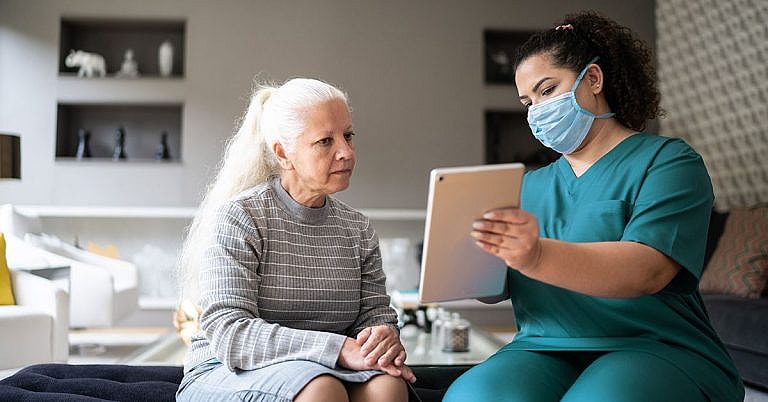Inlyta Dosage: Form, Strengths, How to Take, and More
Inlyta (axitinib) is a prescription drug used to treat advanced kidney cancer in adults. The drug comes as an oral tablet that’s usually taken twice per day.
Specifically, Inlyta is prescribed:
- as the first treatment for advanced renal cell carcinoma (RCC). In this instance, Inlyta is used in combination with either avelumab (Bavencio) or pembrolizumab (Keytruda).
- by itself to treat advanced RCC when another type of treatment hasn’t worked
The active ingredient in Inlyta is axitinib. (An active ingredient is what makes a drug work.) Inlyta belongs to a group of drugs called kinase inhibitors.
This article describes the dosages of Inlyta, as well as its strengths and how to take it. To learn more about Inlyta, see this in-depth article.
* Advanced means that it’s spread to other areas of the body or can’t be surgically removed.
What is Inlyta’s dosage?
This section describes the usual dosages of Inlyta.
What is Inlyta’s form?
Inlyta comes as an oral tablet.
What strengths does Inlyta have?
Inlyta comes in two strengths: 1 milligram (mg) and 5 mg.
What are the usual dosages of Inlyta?
The information below describes Inlyta dosages that are commonly used or recommended. But be sure to take the dosage your doctor prescribes. They’ll determine the best dosage to fit your needs and may adjust it until they reach the right amount for you.
Dosage for RCC
The typical starting dosage of Inlyta for adults with RCC is 5 mg taken twice per day (every 12 hours). Depending on your particular situation, your doctor may prescribe Inlyta alone or in combination with either avelumab (Bavencio) or pembrolizumab (Keytruda).
If you’re taking Inlyta alone and don’t have bothersome side effects after about 2 weeks, your doctor may increase your dosage from 5 mg to 7 mg twice daily.
If you still aren’t experiencing serious side effects, they may further increase your dosage to 10 mg twice daily. If you have high blood pressure or take medication for high blood pressure, your doctor may increase your dose more slowly.
The dosage of avelumab, when used in combination with Inlyta, is 800 mg. Avelumab is given as a 60-minute intravenous (IV) infusion (an injection into a vein given over time) by a healthcare professional once every 2 weeks.
With this combination therapy, your doctor may increase your dosage of Inlyta after 2 weeks (or longer) based on your response to treatment.
The dosage of pembrolizumab when used in combination with Inlyta is 200 mg. This is given as an IV infusion over the course of 30 minutes by a healthcare professional. You’ll either receive 200 mg once every 3 weeks or 400 mg once every 6 weeks.
With this combination therapy, your doctor may increase your dosage of Inlyta after 6 weeks (or longer) based on your response to treatment.
Your doctor will monitor how you respond to treatment with Inlyta and adjust your dosage accordingly. If you experience certain side effects, they may lower your dose, pause, or stop your treatment.
For more information about your dosage of Inlyta, talk with your doctor.
Is Inlyta used long-term?
Yes, Inlyta is usually a long-term treatment. If you and your doctor determine that it’s safe and effective for your condition, you’ll likely take it long-term.
Dosage adjustments
In certain cases, you may need dosage adjustments for Inlyta.
If you have moderate liver problems, your doctor will adjust your dosage of Inlyta. With liver problems, it may take longer for the drug to leave your body. This can increase your risk of side effects. Typically, your doctor will reduce your starting dosage by half of the usual dosage for RCC. They may adjust your dosage further (up or down) based on how you respond to treatment.
Your doctor may need to reduce your Inlyta dose by half if you’re taking certain other medications called CYP3A4/5 inhibitors. This type of drug is known to interact with Inlyta and can increase its effects as well as your risk of side effects. Examples of CYP3A4/5 inhibitor drugs include certain:
Your doctor may adjust your dosage of Inlyta based on your response to Inlyta in combination with other drugs.
Tell your doctor if you have liver problems and about all the other medications you take. They’ll determine whether you need Inlyta dosage adjustments.
What factors can affect my dosage?
The dosage of Inlyta you’re prescribed may depend on several factors. These include:
How is Inlyta taken?
Inlyta comes as an oral tablet you take with a glass of water approximately every 12 hours. You can take it with or without food. Do not cut, crush, or chew Inlyta tablets. Swallow them whole. If you have trouble swallowing tablets, see this article for tips on how to take this form of medication.
For information on the expiration, storage, and disposal of Inlyta, talk with your doctor or pharmacist.
Accessible drug containers and labels
Some pharmacies provide medication labels that:
Your doctor or pharmacist may be able to recommend pharmacies that offer these accessibility features if your current pharmacy doesn’t.
Let your pharmacist know if you have trouble opening medication bottles. They may have tips to help, or they may be able to supply Inlyta in an easy-open container.
What if I miss a dose?
If you miss a dose of Inlyta or vomit after taking a dose, skip that missed dose and continue with your next scheduled dose at its regular time. Do not take two doses of Inlyta at once to make up for a missed dose. If you’re not sure whether you should take a missed dose, ask your doctor or pharmacist.
If you need help remembering to take your dose of Inlyta on time, try using a medication reminder. This can include setting an alarm or downloading a reminder app on your phone.
What should be done in case of overdose?
Do not take more Inlyta than your doctor prescribes, as this can lead to harmful effects.
Symptoms of overdose
Symptoms caused by an overdose of Inlyta can include:
What to do in case you take too much Inlyta
Call your doctor right away if you think you’ve taken too much Inlyta. You can also call 800-222-1222 to reach America’s Poison Centers or use its online resource. But if you have severe symptoms, immediately call 911 (or your local emergency number) or go to the nearest emergency room.
Frequently asked questions
Below are answers to some commonly asked questions about Inlyta’s dosage.
Is Inlyta’s dosage similar to that of Keytruda?
No, it’s not. While Inlyta and Keytruda (pembrolizumab) are both used to treat types of RCC, the forms and dosages of these two drugs are different.
Inlyta is used in combination with Keytruda as a first-time treatment for advanced RCC. Inlyta comes as an oral tablet. Keytruda comes as a liquid solution given as an IV infusion by a healthcare professional.
For more information about dosages and dosing schedules for these two drugs, see the “Dosage for RCC” section above. Your doctor will prescribe the drug or drug combination and dosages that are right for you. Talk with them to learn more about how these two drugs compare.
How long does it take for Inlyta to start working?
Inlyta starts to work after your first dose, but because of how it works, you likely won’t feel it working in your body. Your doctor will monitor you during treatment to make sure the drug is effectively treating your condition.
If you have other questions about what to expect from your Inlyta treatment, talk with your doctor.
What should I ask my doctor?
The sections above describe the usual dosages provided by Inlyta’s manufacturer. If your doctor recommends this drug, they’ll prescribe the dosage that’s right for you. Do not change your dosage of Inlyta without their recommendation. Only take this drug exactly as prescribed.
Talk with your doctor if you have questions or concerns about your current dosage. Examples of questions you may want to ask include:




Sure! Thank you for the comprehensive information. It’s really helpful to have all the details about Inlyta dosage, especially the specifics on how to take it and the different strengths available. It makes managing my treatment plan a lot easier.
Thanks for the detailed rundown on Inlyta dosage! This is really helpful for anyone starting treatment or looking to understand their prescription better. The clear explanations of forms and strengths make it easy to follow. Great work!
This is incredibly detailed and helpful! I’ve been prescribed Inlyta, and understanding the different dosages and how to take it properly is really important to me. Thank you for breaking down the forms and strengths so clearly. It’s great to have all this information in one place!
Great article! Very comprehensive and easy to understand. It’s really helpful to know the specifics about Inlyta dosage, including the different forms and strengths available. The section on how to take the medication properly is especially useful. Thanks for the detailed info!
This article provides really thorough and helpful details about Inlyta dosage. I appreciate the clear explanations of the different forms and strengths available, as well as the step-by-step instructions on how to take it correctly. Very informative for anyone prescribed this medication! Thank you for compiling this information.